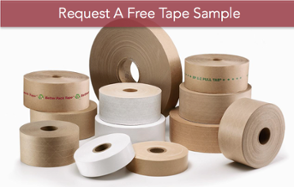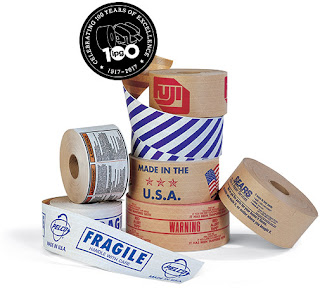 |
| Making the most of your packing station |
✓ Michelle Adams, Business Development Manager Omni Channel Fulfillment
✓ Jeff Deacon, Sr. Director, Global Market Development
✓ Rob Hoffman, Senior Vertical Sales Manager
✓ Marc Schaible, Business Development Director, Omnichannel Fulfillment
Here are their suggested New Year’s resolutions for making your 2018 packaging station more efficient, productive and safer.
New Year’s Resolution #1: I will take a good hard look at my packing station to make sure it’s set up right.
Advice from the experts:
✓ “The most important consideration in setting up a packaging station can be summed up in one word: Space. Is there enough space for the pack station?” advises Hoffman.
✓ “You need to ensure that the packer has a safe work environment with minimal risk of injury,” suggests Deacon. Adams adds: “One that safely maximizes throughput.”
✓ Adding to that thought, Schaible counsels” Set up your packing station with workflow in mind.”
New Year’s Resolution #2: I will set up my packing station to avoid the most common mistakes companies make.
Advice from the experts:
✓ “The biggest mistake people make when setting up a packing station is not taking into consideration the space that is required to set to set up a pack station properly,” notes Hoffman.
✓ “People not only make it too small; they make it too inflexible so it can’t grow with their needs,” says Schaible.
✓ “Don’t make the mistake of not accounting for growth in volume and carton size,” says Deacon.
✓ “I’d say the biggest mistakes people make are: a lack of efficient design layout; not having any or enough automation; failing to consider mobile packing station and, building on the others’ comments, failing to consider future growth,” adds Adams.
New Year’s Resolution #3: I will follow the 14 Commandments of efficient, effective and safe packaging station design.
Space Planning – Make sure there is adequate space for the station and the type of product that will be processed.
Power Needs – Ensure there is proper electric service at the pack station, preferably hardwired in conduit and metal outlet boxes. “Extension cord is a no-no!” advises Hoffman.
Plans For Comfort – Two things make for a more comfortable (and productive) shift: a padded floor and a fan (since most shipping areas are not air conditioned).
Ergonomics For All – Realize the pack station needs to be set up to accommodate all associates. Shorter associates should not have to strain or step up on something to gain access to boxes or packing materials that are stored on shelves. Conversely, a tall associate should not have to bend down to conduct his or her work.
Packing Station Customization – Determine the workflow, power and connectivity hook-up needs. Have a storage strategy and customize your packing station as needs change.
Work Flow Rules – Design the pack station with work flow in mind to keep the associates’ movement to a minimum. They should not have to walk very far to pick up a product to be packed or to restock their packaging supplies.
Efficient Layout – Identify proper layout of storage for ease of use of packaging supplies like boxes, bags, envelopes, labels, protective packaging like air pillows and other essential supplies.
Critical Equipment – Identify essential equipment needs to improve automation like scanners, computers, scales, electric or hand-operated water-activated tape dispensers and void fill, such as air pillows.
Mechanical Assistance Availability – Consider the possibility of mechanical assistance like lifts and conveyors if there is a need to ship heavy/bulky packages.
Bottleneck Planning – Identify and plan for potential bottlenecks in the order fulfillment process.
Shipping Options – Provide secondary packaging options that match the products being shipped. For example there should be cartons on hand for hard goods and polybags for goods like apparel.
Productivity Enhancement – Increase packer productivity by creating exact order process steps to reduce inefficiencies in workflow.
Regular Maintenance – Periodically schedule process reviews and safety training.
Growth Planning – Plan for future growth.
Better Packages | Water-Activated Tape Dispensers and Tape
Better Packages offers a complete line of water-activated tape dispensers. Its parent company, Intertape Polymer Group, produces a full line of Central® brand water-activated tape, including reinforced and non-reinforced tape. In addition to providing products for packing stations, the companies help their customers analyze and solve their packing station challenges.Learn more about maximizing your packing station productivity by downloading this guide.
















